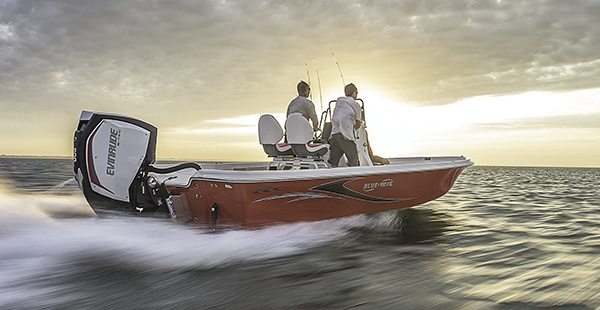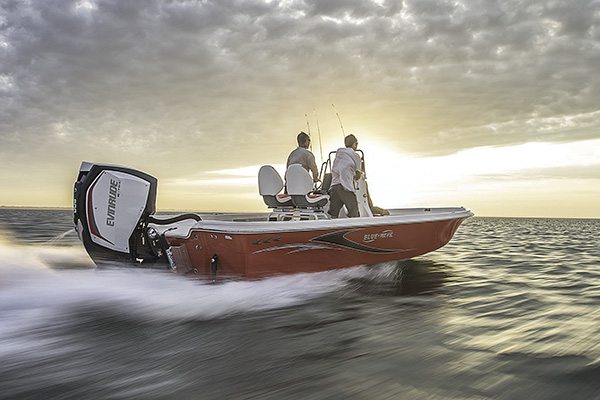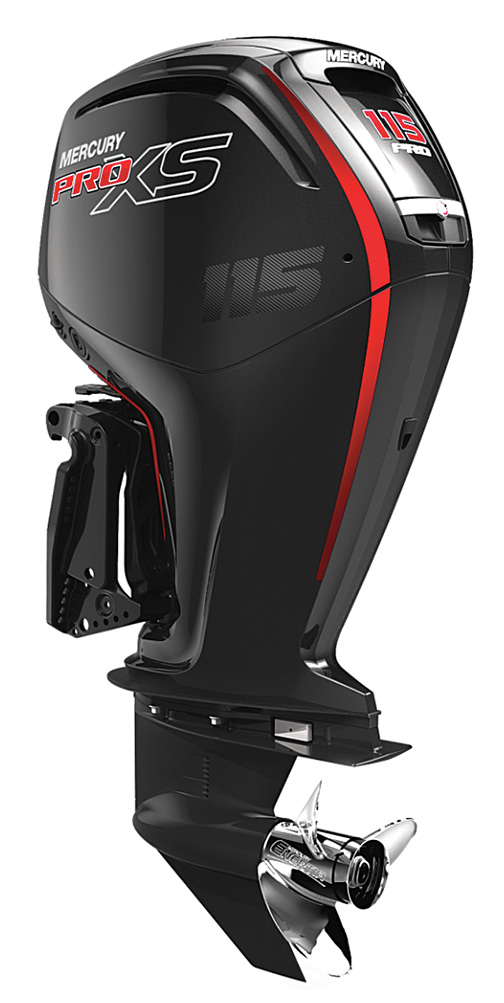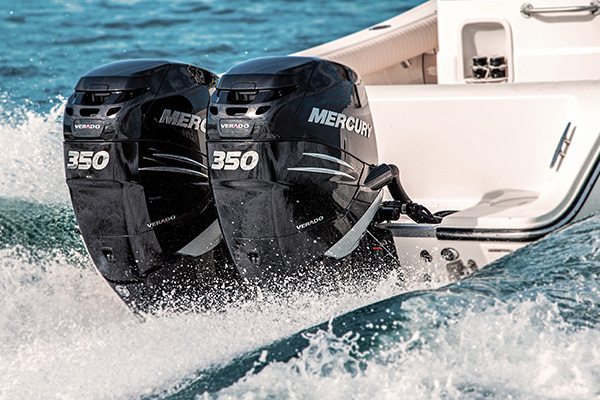Repowering redux driven by outboard opportunity

Engine manufactures provide update on market segment
Repowering represents a growing and evolving market segment. Eventually, in terms of operating hours, a simple engine tune-up will no longer restore lost power. That’s when the serious repowering discussions often begin.
Repowering decisions are based on many factors, including cost, horsepower needs, fuel efficiency, emissions and more.
For many boat owners, repowering means switching from a mechanically governed engine to one with electronic management. It’s a change that offers many benefits.
Boating Industry recently asked engine manufacturers to provide a product update and explain financing options that are available for providing more horsepower to the hull.

According to Brunswick Corp., the U.S. repowering market represents a $425 million opportunity. Mercury Marine’s gains in repower will continue to drive a growth share in the mid-20 percent range.
“[Tapping this market] is a great way to leverage the installed base of boats that are in the marketplace,” said Mercury Marine President John Pfeifer during Brunswick’s 2017 Investor Day at the New York Stock Exchange. During the Nov. 7 event, Pfeifer and other Brunswick executives communicated highlights of the company’s next three-year strategic plan. Their presentation included a look ahead regarding repowering.
There are roughly 8 million Mercury propulsion systems in the market today, Pfeifer said, further estimating a total of 18 million powerboats worldwide. “There’s a lot of continued repower opportunities,” he said. “There are a lot of people who want to get the latest technology on their boat. They want the quietest propulsion system. This is a big opportunity for us to expand on the product development investments that we have made.”
Ever since the Great Recession of 2008, the number of people upgrading boats with improved horsepower has grown significantly each year.
A Mercury Dockline article summarized the trend as follows: The obvious answer to the repowering question is that when an older outboard engine reaches the end of its service life or the part to fix it become difficult to find, it’s much cheaper to repower than to buy a new boat-and-engine package.
But saving money and extending the boat’s usable lifespan aren’t the only reasons more owners are investing in new outboard engines today.

Trends driven by technology
Twenty-first century engineering and manufacturing technology advances have made outboards faster, easier to handle, more durable, more reliable, lighter, lower-profile, quieter and more fuel-efficient.
Last September, Mercury Marine announced its latest repowering promotion, which focused on the 9.9hp ProKicker and 30hp and above (FourStroke, OptiMax and Jet).

recent repowering success
story is the 2.1L four-stroke
115ProXS, which replaced
the discontinued two-stroke
DI 115 ProXS.
Consumers were given option to choose between a repower retail factory rebate or promotional financing of zero down, zero payments and zero interest for six months on qualifying repower purchases.
“We offer flexible financing for outboard, stern drive and inboard repowers between $5,000 to $50,000,” said Lee Gordon, Mercury’s director of global public relations and communications. “We will finance the entire repower package that includes the accessories required to complete the repower.”
As an added incentive, dealers can offer an additional cash rebate towards a repower or zero percent down, zero percent interest and zero payments for 6 months off and on throughout the year.
Dealers are supported through Mercury’s marketing portal, where the company offers marketing support materials.
Mercury’s control system is based on a SmartCraft protocol that encompasses not only all digital information, but all control capabilities – everything that makes boating easier, Gordon said.
“Our Digital Throttle and Shift (DTS) technology offers several innovative and helpful features including smooth and fluid operation with no cables to stretch, bind, lubricate, or replace,” he said.
“When equipped with a suitable display or gauge, the user also gains Troll Control, cruise control, Smart Tow with Launch Control, and the Active Trim interface, along with descriptive fault text should a fault condition occur.”
As four-stroke engines are developed and introduced, and continue to gain market share, Mercury Marine has seen a steady shift globally towards four-stroke technology, particularly in higher horsepower offerings, Gordon said. “As such, we have seen that if the a two-to four-stroke transition has no negative side effects, such as weight or acceleration, that market moves quickly.”
For Mercury, a recent example is the two stroke DI 115 ProXS, which was discontinued and replaced by a 2.1L four stroke 115ProXS. The shift was dramatic and the 115 four-stroke has clearly surpassed the highest volumes we had ever seen with the two stroke DI ProXS, Gordon said.
“The new four-stroke meets or exceeds performance benefits of the two-stroke in a smart-looking package that’s similar in size and weight,” he added.
Engine choice is critical
Repowering can re-ignite the passion for getting out on the water with family and friends.
However, it is important to understand which engine choice provides the best and most fulfilling boating experience based on each customer’s particular needs and desires, said Larry Koschak, Evinrude’s senior product coordinator.
Today’s outboard brands include technologies that deliver enhance levels of reliability, economy and lower emissions when compared to just 10 to 20 years ago. “Smooth and quiet running characteristics are always desirable, but if they come at the sacrifice of power, torque and performance, often times a repower effort can lead to disappointment,” Koschak said.

Evinrude’s repowering initiatives are variable and based on horsepower, but compliment company engine classes from 3.5hp to 300hp, Koschak explained.
“The promotion offers 10 years of coverage for all unsold Evinrude E-TEC and E-TEC G2 outboards or 5-year coverage and free rigging. Portable engines are eligible for 5 years of coverage, which includes related accessories purchased with the engine at time of sale,” Koschak said.
Available on boats with twin Evinrude E-TEC G2 150 to 300 HP engines, the iDock joystick piloting system is the newest addition to the Evinrude Intelligent Piloting System. It includes features designed to instill confidence in boaters. Evinrude iDock models follow the same installation process as E-TEC G2 engines and typically require less than one hour on water setup.
Koschak reported that iDock is currently sold out due to exceptionally high demand.
Old vessels get new life
Mastry Engine Center began 2018 with the launch of its 10th Suzuki RePower Center.
Cocoa, Florida-based Marine Pro of Central Florida Inc. joined the company’s expanding network of certified sales and service facilities.
A long-time Mastry distributor for Yanmar, Marine Pro of Central Florida offers a range of mechanical and electrical services.
In addition to its Cocoa, Fla. facility, it has a waterside location at Port Canaveral Marine.

“We’re pleased to welcome Marine Pro,” said David Taylor, Suzuki RePower by Mastry sales and marketing representative, in a news release. “They’ve been a Gold Yanmar Service dealer for years and will be an important part of our Suzuki RePower team.”
As engines age and decline in performance, the boats they power are often in like-new condition. This is why repowering brings renewed life to a vessel at a fraction of the cost of buying new.
Mastry offered a 2008 32-foot Regulator center console that was recently repowered with twin Suzuki DF350A outboards as an example of this trend.
Boats like the 32-foot Regulator are often meticulously maintained and in perfect condition, but their engines begin to drop in performance over time.
In calm seas and 90-degree temperatures, the boat accelerated to 4,000 rpms in 2.6 seconds with three people and a 52 percent load.
At a cruising speed of 39.5 mph at 4,500 rpm, it burned 27.34 gph, for a mileage of 1.44 mpg, Taylor reported.
Winner of a 2017 National Marine Manufacturer Association Innovation Award, the 4.4L V-6 Suzuki DF350A features a 12:1 compression ratio, double overhead cams, 24 valves and two fuel injectors per cylinder and dual, contra-rotating three-blade props.




